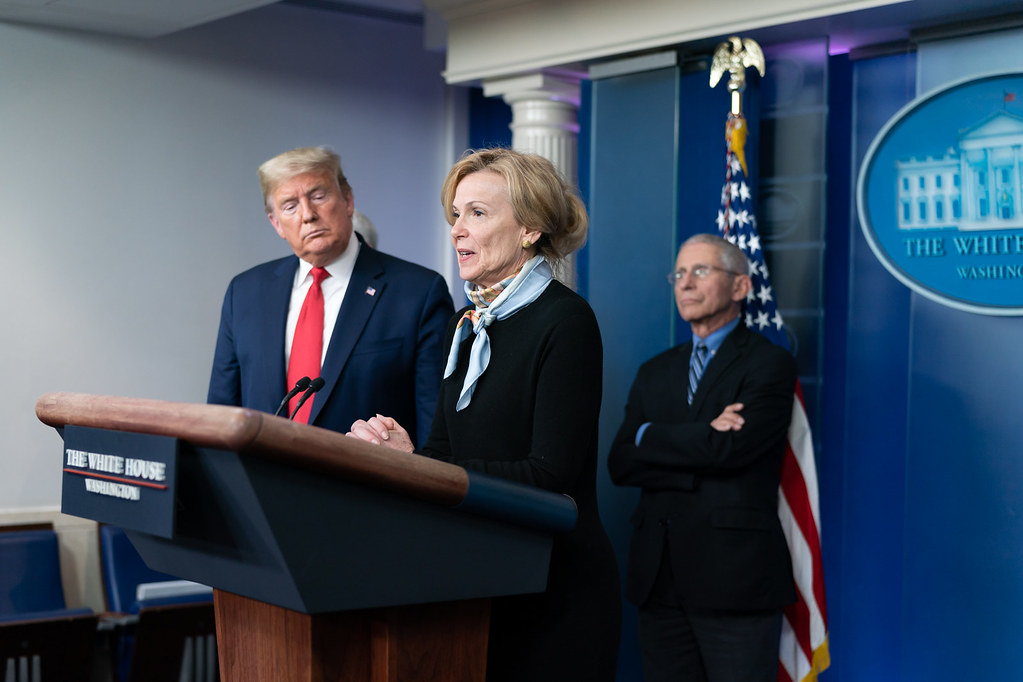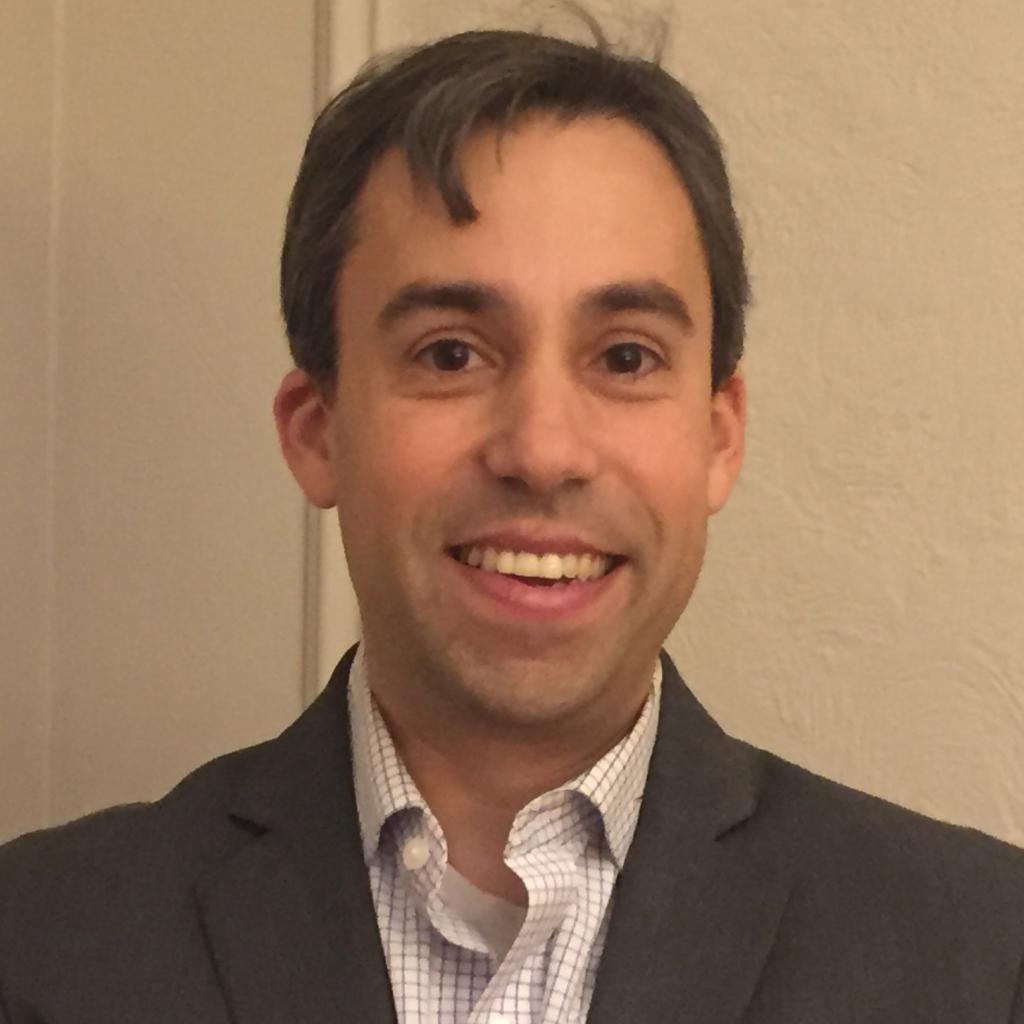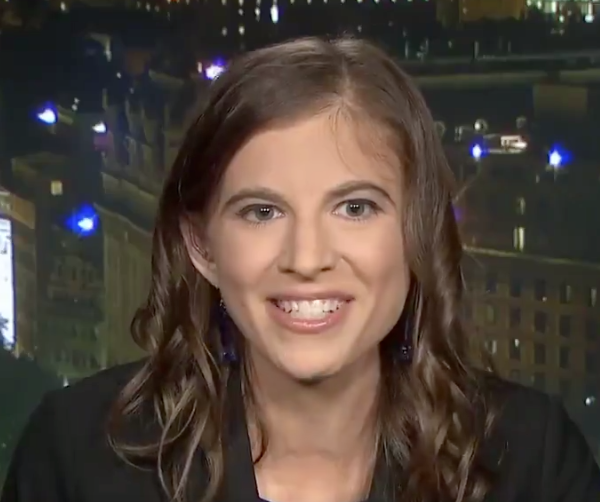Trump Can’t Reopen the Country Over State Objections
If the president tries to force states to prematurely ease social distancing restrictions, they should resist. They have the Constitution on their side, and they will almost certainly win in court.

Published by The Lawfare Institute
in Cooperation With

In 2007, researchers published findings in the scientific journal PNAS showing how local governments mitigated outbreaks of the 1918 flu pandemic by aggressively limiting public gatherings. Cities such as San Francisco and St. Louis, which introduced restrictions early in one of the “waves” of the disease, fared much better than Philadelphia, which held a World War I victory parade that attracted tens of thousands of people to its famous Broad Street. Philadelphia was soon hit hard by the flu, while San Francisco and St. Louis were relatively spared.
“When multiple interventions were introduced early, they were very effective in 1918,” one of the researchers, Richard Hatchett, told the New York Times. “And that certainly offers hope that they would be similarly useful in an epidemic today if we didn’t have an effective vaccine.”
Thirteen years after Hatchett and his colleagues released their work, many of America’s governors are counting on findings like these. The likes of Mike DeWine of Ohio, Andy Beshear of Kentucky, Larry Hogan of Maryland and J.B. Pritzker of Illinois—Republicans and Democrats alike—have mandated strict social distancing measures in an attempt to curb the spread of COVID-19, the disease caused by the novel coronavirus, before it overruns their states’ health systems. Other governors, such as Andrew Cuomo of New York and Jay Inslee of Washington, have ordered particularly far-reaching limits on congregating in response to the advanced threat confronting their constituents.
But President Trump is threatening to undermine the state responses to this unfolding crisis. Although the White House rolled out its “15 Days to Slow the Spread” guidelines on March 16, Trump has since reversed course and proposed, for example, curtailing those guidelines in order to jump-start the economy—contrary to the near unanimous consensus of public health experts that the restrictions are necessary to save a million or more lives, and save the economy by doing so.
What happens if Trump tries to order or coerce states to relax their restrictions and put their residents at risk? Earlier this week in Lawfare, Robert Chesney described some limitations on the president’s power to “force changes if state and local officials won’t follow his lead.” He’s right. And if the president tries to force states to ease restrictions, they should resist. They have the Constitution on their side, and they will almost certainly win in court.
A triad of bedrock constitutional principles gives the states the upper hand. First, the Constitution and cases dating back to the founding era make clear that the power to make decisions about public health and welfare—for example, whether to close businesses and schools—lies primarily with the states, not the federal government. Second, to the extent that the federal government does have power in these areas, that power lies with Congress, not the president. Third, federal powers, even when wielded by Congress, are limited. And, as a practical matter, Congress is extremely unlikely to use its power to force states to roll back public health measures, even if it could do so as a formal legal matter. Under these principles, Trump lacks the legal authority to override orders from governors and other state and local officials that are designed to protect the public health and welfare of their citizens.
State Power
First and foremost, states currently retain power to decide who stays home and for how long. The 10th Amendment expressly reserves to the states those powers not delegated to the federal government. As the Supreme Court has explained, the Framers “rejected the concept of a central government that would act ... through the States, and instead designed a system in which the State and Federal Governments would exercise concurrent authority over the people.” The 10th Amendment codifies the U.S. system of dual sovereignty and makes clear that, although the states surrendered many of their powers to the federal government, they retain “a residuary and inviolable sovereignty” over those powers not assigned to the federal government.
Among the powers generally reserved to the states is the authority to quarantine individuals and otherwise protect public health. The regulation of the health and safety of individuals “is primarily, and historically, a matter of local concern,” the Supreme Court has held. Accordingly, “[s]tates traditionally have had great latitude under their police powers to legislate as to the protection of the lives, limbs, health, comfort, and quiet of all persons.”
States and localities have exercised their power to impose quarantines throughout U.S. history. At the turn of the 19th century, the Boston Board of Health quarantined ships arriving from the West Indies, the Mediterranean and other tropical ports to limit the influx of smallpox and other diseases. In 1866, New York City issued a quarantine to prevent a cholera outbreak after health officers discovered that 37 passengers on a ship from Liverpool had died of the disease. More recently, in 2014, many states—including Connecticut, Illinois, New Jersey, New York and Texas—instituted quarantines aimed at curbing the spread of the Ebola virus. And over time, a number of states and cities have enacted statutes and promulgated regulations codifying and explicating their quarantine powers. So it should not have come as a surprise in March 2020 when Virginia’s governor reminded Liberty University that—notwithstanding the school’s decision to require faculty and staff to come back to campus and to encourage thousands of students to do so—the university was still obligated to comply with state public health directives, including Virginia’s new ban on gatherings of more than 10 people.
The federal government cannot directly hijack states’ historic quarantine powers for its own ends. In a line of 10th Amendment cases establishing the “anti-commandeering” doctrine, the Supreme Court has repeatedly made clear that the federal government cannot “issue orders directly to the States,” forcing their governments to enact laws or act as appendages of the federal government, carrying out federal programs.
This means that neither the president nor Congress can directly require states and cities to call off their “shelter-in-place” orders, or to reopen schools and businesses. If states wish to keep those restrictions in place beyond Trump’s 15 days, they may.
Congress, however, could choose to effectively displace states’ quarantine power. As a general rule, Congress can displace states’ traditional police powers when it acts pursuant to one of its enumerated powers, “even when its exercise may preempt express state law determinations contrary to the result that has commended itself to the collective wisdom of Congress.” As long as any statute is directed at private citizens and interstate commerce directly—and not to the states as states—it likely does not run afoul of the anti-commandeering doctrine. So here, Congress could conceivably invoke its Commerce Clause power and enact a statute specifying that state orders, laws, and regulations closing businesses that substantially affect interstate commerce or prohibiting individuals from going to work are preempted as an undue burden on interstate commerce.
But Congress has not displaced states’ quarantine powers. Instead, in 1978, Congress invoked the Commerce Clause to complement those powers by amending the Public Health Service Act to provide the federal government with its own limited quarantine authority. The act today grants the secretary of health and human services power to “prevent the introduction, transmission, or spread of communicable diseases from foreign countries into the States or possessions, or from one State or possession into any other State or possession.” But Congress was careful to make clear that nothing in the act was intended to supersede state and local quarantine authorities.
There are, of course, other limits on states’ health and wellness powers. States must exercise these powers consistent with the rights protected by the federal Constitution. And these powers must be used consistent with the dormant Commerce Clause, a doctrine that restricts state actions that impose too heavy a burden on interstate commerce. As Robert Chesney explains, courts are unlikely to conclude that shelter-in-place orders of the types now in force fall on the wrong side of that balancing test.
Congressional Power
Second, the power that the federal government does have in these areas lies with Congress and not the president. The post-9/11 era may have conditioned Americans to think that in times of national crisis, power devolves to the president as commander-in-chief. But while there’s some truth to that when it comes to matters of war and peace, that’s simply not the case for public health crises. It is Congress, not the president, that has the power to “provide for the ... general welfare,” “to regulate commerce with foreign nations, and among the several states,” to appropriate money, and “to make all laws which shall be necessary and proper for carrying into execution” all “powers vested by this Constitution in the government of the United States.”
To be sure, Congress has, in many instances, delegated this authority to executive branch agencies and the president—as it did with the Public Health Service Act. But that which Congress grants, Congress can take away.
In other instances, Congress’s reliance on the executive branch to dole out the money appropriated by the legislature has left de facto discretion to the executive as to when and how that money is spent. But this discretion is limited. For example, any conditions on federal aid must be imposed by Congress, rather than the president, and must be “unambiguously” stated by Congress at that.
This creates limitations on how Trump can respond to the current situation. He has threatened that federal funds may only go to states whose governors have “treat[ed]” him “well.” But, of course, Congress has never unambiguously stated this. Withholding funding, or threatening to withhold funding, on this basis would contravene the law, including Trump’s constitutional duty to take care that the laws are faithfully executed—and possibly even the First Amendment, if the president were to dole out or withhold resources on the basis of political allegiance.
Could Congress Force States to Reopen?
President Trump generally cannot coerce states to relax restrictions designed to mitigate the spread of COVID-19. But it is worth considering whether Congress could enact legislation that requires states to move back toward business as usual.
As discussed above, Congress could invoke its power under the Commerce Clause, on the theory that state restrictions such as stay-at-home orders have a substantial effect on interstate commerce. But we are unaware of any preexisting statutes that even arguably grant this kind of authority to the president—and as Chesney points out, it is exceedingly unlikely that the current Congress, particularly the Democratic-controlled House, would take this step.
Second, it is well established that Congress has the power—through the Spending Clause—to condition the receipt of federal funds on state compliance with certain federal requirements. So, in theory, Congress could tell states that they are eligible to receive certain federal funds only if they agree to lift stay-at-home orders.
In addition to the same practical limitations described above, this power is subject to several limitations that would make it difficult for Congress to leverage its spending power in the current situation (or, as discussed above, for the executive branch to try to use existing statutes to create this leverage). Any condition on the grant of federal funds must be unambiguous. As the Supreme Court explained in National Federation of Independent Business v. Sebelius (NFIB)—which struck down the Medicaid expansion provision of the Affordable Care Act as violative of the Spending Clause—Spending Clause legislation is like a contract between the federal government and the states. As such, the states must know what they’re signing up for. This means that Congress cannot change the terms of the deal down the road by adding conditions to existing programs or sources of funding. So, with respect to the current situation, Congress would need to create new funding streams or find existing funding streams that are at least arguably already conditioned on compliance with federal public health guidelines.
Conditions on federal funding must also be related to the interest that the funding seeks to advance. So, to use the example that the Supreme Court considered in South Dakota v. Dole, Congress can condition the receipt of federal highway funding on states setting a minimum drinking age of 21, because that condition is closely related to one of the main purposes of the federal highway funds, that is, safe interstate travel. While “relatedness” is not an exacting standard, it might be difficult for Congress to identify funding streams that are sufficiently related to a requirement to ease social distancing restrictions.
On top of this, in the words of Chief Justice John Roberts in NFIB, a Spending Clause condition must not be so coercive that it amounts to “a gun to the head” of the states. States must be left with a legitimate option to refuse to comply with the condition and thus reject the federal funds. In NFIB, this meant that Congress could not condition all Medicaid funding—a substantial portion of state budgets—on the requirement that states expand Medicaid in the manner dictated by the federal government, because this supposed choice really left states with only one option. To renounce the federal funds would be catastrophic.
* * *
There is a legitimate discussion to be had about the social and economic consequences of social distancing, and when those costs might come to outweigh the costs of the spread of the virus. But experts agree that the United States is months away from that point. For now, the scientific consensus is that the U.S. must continue social distancing in order to avoid overwhelming the medical system and endangering millions of lives.
Despite this, the president has pushed to ease restrictions put in place to mitigate the pandemic. Congress is very limited in its ability to enact Trump’s unwise suggestion. But even if the president cannot force the states to stop pursuing sound public health policy and protecting their citizens, he can still do profound damage and cost lives by modifying the social distancing guidelines provided by the Centers for Disease Control and Prevention or otherwise pressuring states to lift their public health measures.
Some states reluctant to act on their own, such as Texas, initially followed the CDC’s lead in making their decisions to close schools and enact social distancing measures. But now that the president is wavering on keeping the guidelines in place, those same states are showing signs that they will do the same. Texas Lt. Governor Dan Patrick, for example, echoed Trump’s recent comments by telling Fox News’s Tucker Carlson that Texans should “get back to work.” (Fortunately, Texas’s governor does not seem to share those views.) Meanwhile, shortly after the president started talking about putting an end to social distancing, Mississippi’s governor, Tate Reeves, issued an executive order that effectively overrode local social distancing orders.In those states that continue their restrictions in spite of federal guidance, individuals may nonetheless look to the president in deciding whether to follow the state’s rules, or even in deciding to self-medicate for the infection rather than seeking professional advice. This can have deadly consequences; indeed, it already has. But the states have the legal power to blunt the president’s dangerous influence, and they should not hesitate to use it.
While the federal government traditionally plays the central role in mobilizing a response to national crises, there are occasions in which states can be best positioned to play the primary role in protecting the health and welfare of their constituents. The COVID-19 pandemic—which necessitates agile and proactive government interventions, based on fast-developing circumstances in specific locales—is one such occasion. Governors must be in a position to act swiftly if they deem it prudent. The federalist system allows them that flexibility.
Disclosure: The authors work for Protect Democracy, which has represented Lawfare editors Benjamin Wittes, Jack Goldsmith, Scott Anderson and Susan Hennessey on a number of separate matters.







.jpg?sfvrsn=8588c21_5)
